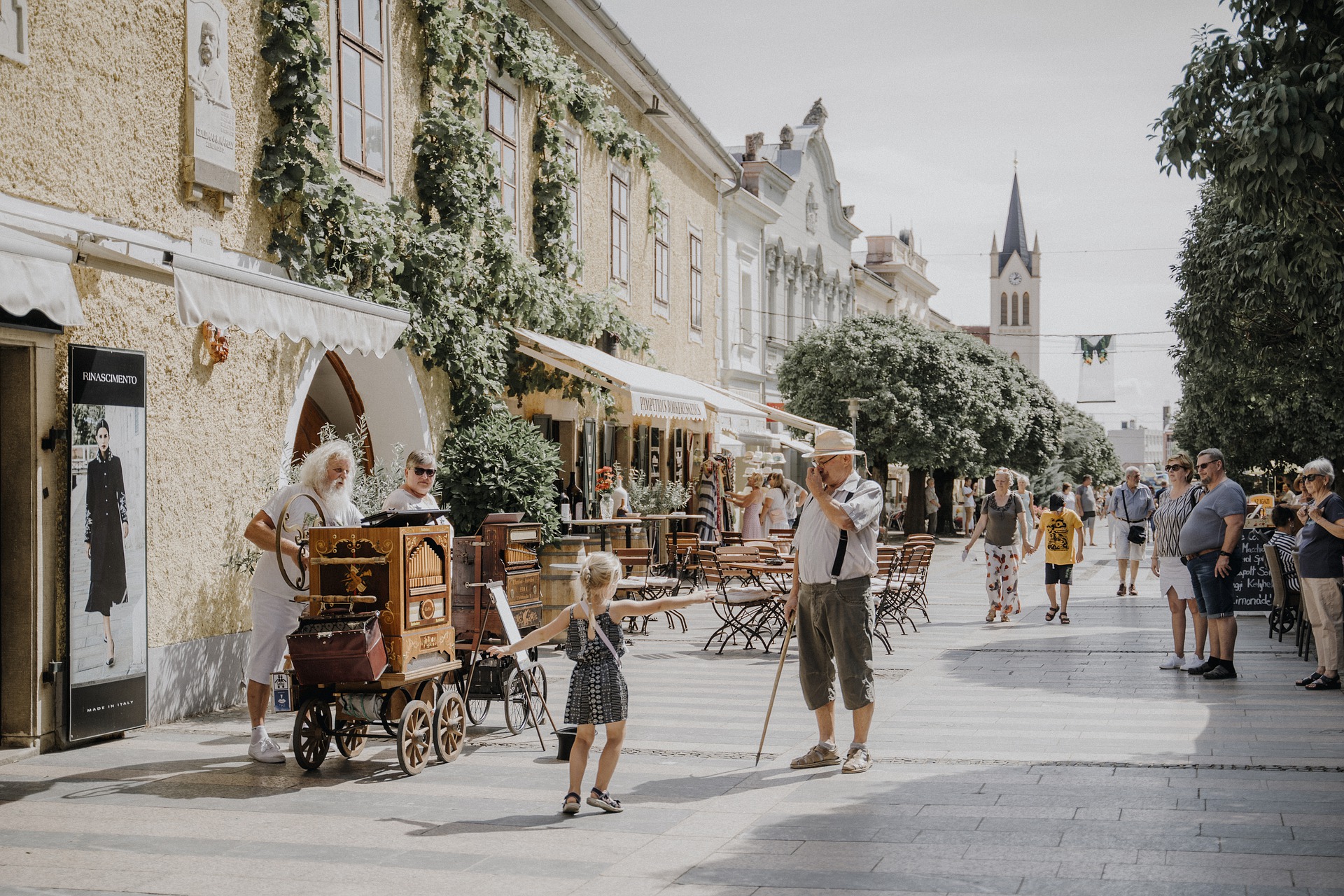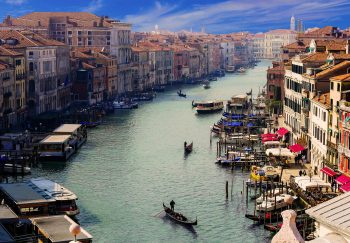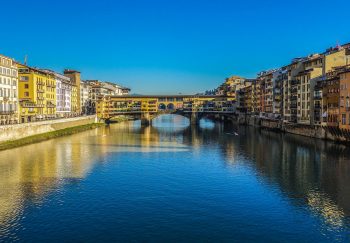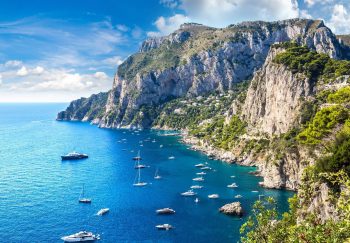There’s always something to do in Italy no matter the season. There are many museums, monuments, and towns that you can visit, but the best way to experience true Italian culture is to participate in local festivals.
Italy is a country with a unique and wonderful way of coordinating events. You can ensure that you’re there to enjoy the festivities with just a bit of planning. We have compiled a list of our favorite Italian festivals, including public holidays in Italy. Keep in mind that festivals can often lead to closures of other establishments, such as stores and car rental places. Restaurants and hotels will be booked up while they are closed. This is particularly true for smaller towns. If you plan to visit Tuscany during the Feasts of the Immaculate Conception and want to enjoy the Christmas Markets as well as the decorations the hill towns offer, make reservations early.
Winter
January 1, Capodanno
Capodanno, as it is known in Italy, is the Italian New Year’s Day. You can ring in the new year in Italy on December 31st at all kinds of places, including restaurants, piazzas and pubs. There will be fireworks. Keep an eye out for special events in your city, even though most shops and restaurants will be closed on January 1. Venice has a tradition swim in the lagoon. We don’t recommend swimming at Venice. However, there is one exception to the rule.
January 6: Epiphany
According to Catholic tradition, the Epiphany marks the moment when three wise men reached Jesus’ baby and gave him gifts of myrrh, gold, and frankincense. It’s also a significant Italian festival for children due to the arrival of La Befana, an old lady on a broomstick who fills children’s shoes and stockings with candy. This day will see most shops and markets close.
February: Carnevale
Although Venice’s world-famous Carnival Festival is the most popular, it’s not all that’s celebrated in Italy. For a complete list, see The Best Places to Celebrate Carnival in Italy.
Carnevale can be celebrated in Venice from February 11 to 28. The weekend is when most of the main celebrations for this traditional Italian festival are held, especially the last weekend. Viareggio, further south, hosts spectacular Carnevale celebrations every Sunday in February. These are accompanied by massive man-made floating floats. Although the themes vary from beautiful scenes to satirical remarks on politicians, each one is huge and well worth watching. On February 28th, you can celebrate Carnevale at Ivrea in Piedmont. The carnival celebrations end with a huge food fight featuring – brace yourselves – oranges. Oranges may sound a bit violent but they are a reminder of a medieval battle between townsfolks and nobility that resulted in the torching the castle. It’s a very messy and unique experience.
Spring
April 3: Ravello Concerts
Ravello is a popular tourist destination all year, but it fills up more in spring and fall for the annual Ravello Art Concerts. This is not the summer tourist season, but a time when music enthusiasts fill the gardens and banquet halls at the Villa Rufolo for concerts. The festival began as a chamber music festival. However, it has since expanded to jazz. It hosts more than 1,750 concerts in its two seasons. This means that there’s something for everyone.
April 6: Procession Of Mysteries, Sicily
It is not uncommon to see processions and pilgrimages filling the streets of Sicily during Easter Holy Week. But the Procession of Mysteries, Trapani, Sicily, is perhaps the most well-known. It has been held in Trapani, Italy, since 1400. At a staggering 24 hours it is also one of the longest festivals. These mysteries represent the Passion and Death of Christ. The mysteries are paraded through the city with lights, sounds and surprising emotional crowds. The procession starts at Anime Sante del Purgatorio Church at 2.30 p.m. Good Friday and ends at the church at 2.30 p.m. Black Saturday. This is a beautiful cultural and religious spectacle.
April 9 -12: Vinitaly, Verona
VinItaly, the largest international wine exhibition, is held in the stunning UNESCO World Heritage town of Verona. Visitors can enjoy four days of wine tasting, buying, sharing, and exchanging at a celebration that celebrates food and art. This celebration Italian wine_ is an event you don’t want to miss.
April 16: Easter Sunday, Florence.
Easter Sunday is celebrated in Italy with many parades and events. But the Scoppio del Carro is the most famous. It is held in Florence. Literally translated, it means the “explosion” of the cart. This folk tradition dates back to the First Crusade era, when a Florentine was believed to have been the first man to cross the gap in the sacking Jerusalem. The hero returned with stone fragments from Jerusalem’s Holy Sepulchre to light a Sacred Fire. He then rode through the city in a magnificent chariot. This Italian festival recreates the entire scene. A large wagon with fireworks is pulled by white oxen, soldiers, musicians and others in 15th-century costumes. The historic stone is used to light the string leading to the cart. At the same time, Giotto’s belltower ring out. The whole firework show lasts around 20 minutes, and is believed to bring good fortune!
Continue reading: Easter In Italy: 5 Things You Should Know
April 17: Pasquetta
Pasquetta, or “Little Easter” as it is known in Italian, is a national holiday that Italians have to celebrate. This is a great day to get together with friends and enjoy the spring weather. While most museums and sites will be open, we recommend bringing a picnic to share with the rest of Italy.
April 21: Rome’s birthday celebration
Rome celebrates its birthday in typical Roman fashion with a party lasting for days. Traditional events like the Tracciato del Solco (or trench-digging ritual), reenactments of Palilia’s Palilia ceremony, mock gladiator battles , and other nods towards the Eternal City’s almost-eternal past are held to commemorate Rome’s legendary founding by Romulus in 753 BC. The festivities culminate in a parade of costumes that begins and ends at Circus Maximus. This lighthearted Italian festival is a great way to really enjoy the city’s rich heritage. It celebrates its 2,770th anniversary this year!
April 25th: Italian Liberation Day (some closings), and also St. Mark’s Day in Venice
April 25th is Festa della Liberazione. It celebrates the end to WWII in Italy. This date will be displayed on street signs all over Italy. It is a national holiday and most shops will be closed.
It is also the feast day for St. Mark, patron saint of Venice. Venetians celebrate their saint with a gondolier race (boat race) as well as a large party in Saint Mark’s Square. This feast day coincides with the Festa del Bocolo (or “blooming rose festa”), an ancient tradition in which men give the women in their lives a red rosebud (bocolo) as a gift. No matter what you do, be prepared for crowds in Venice. Bring a rose to your significant other.
May 1, Labor Day (closures).
Italy’s National Labor Day is another national holiday. May 1st is also a national holiday. Expect major museums to close on this day. There will be limited public transportation options and fewer choices than other secular national holidays. It’s a busy weekend for many popular destinations in the country because Italians are absent from work in large numbers and the weather is generally good.
May 12: La Cavalcata Sarda, Sardinia
After almost a month of cultural events, Sardinia hosts one of the biggest events in Sardinia with the Cavalcata Sarda or Sardinian Horse Race. Traditional costumes are worn by participants as they parade through the town on horseback before heading to the race track at town’s edge for stunts and horse races. The two-day event today is a testament to the Sardinian pride in their culture, history, and island.
May 13-November 26: Venice Biennale
Every other summer, the Venice Biennale hosts an international art show. There are many locations where art and music exhibits can be found. They are located in the Biennale Garden pavilions, as well as in some of the incredible private buildings and villas throughout Venice. This is the best way to see all the beautiful mansions if you’ve been to the city before but don’t know anyone who does. Although the 2017 artists are yet to be announced, we recommend this festival for anyone who wants to experience world-renowned art and explore beautiful Venice.
May 15: Festa dei Ceri in Gubbio
The Festa dei Ceri, an Italian folklore event, is the Festa dei Ceri, Gubbio. It’s an annual race dedicated to St. Ubaldo. This patron saint of Gubbio began in the year of his death, in 1160. Every year on the 15th of Mai, Gubbio’s people take part in an unusual, but not so ordinary, procession. They carry huge wooden “candles” up Mount Ingino to reach the Basilica of St. Ubaldo. The entire structure is 700 lbs and each candle is crowned by a statue representing a saint. Although it is not an easy race, it is a very unique one that will appeal to the Atlas Obscura crowd.
Summer
June 2, 2012: The anniversary of the republic
Festa della Repubblica is a celebration of the founding of the Italian Republic. You may find festivals, parades or concerts depending on where you live, but most museums and major sites remain open.
June-August: International Festival of Arts, Taormina (Sicily).
Also known as Taormina Arts, this town’s cultural festival is open throughout the summer. It hosts concerts, exhibitions and the Taormina Movie Fest. This festival brings the best of film to a week of premieres, photo shoots and other events, similar to the Cannes film festival. You can find a wide range of performances, music, and other events at Taormina during the summer.
June – September: Taormina Opera Festival
The Taormina Summer Opera Festival coincides with their art festival. It starts in June and continues through September. There are performances of classics such as Carmen and Don Giovanni at very reasonable prices. The Teatro Antico is the town’s open-air Greek theatre. It has views over to Mount Etna and Teatro Greco in Syracuse further down the coast. Online tickets can be purchased (although it is in Italian) at the Palazzo dei Congressi box office.
June 4: Vogalonga Regatta, Venice
Although it was a young festival in Italy, the Vogalonga Regatta saw more than 500 boats and 1,500 rowers. To protest motor traffic in Venice’s waterways, the gondola race was established to restore pride in Venetian handicrafts. The 30-kilometer race, which takes place in some of the most beautiful parts of Venice’s lagoons and canals, is attended by approximately 1,550 boats and 5,800 rowers.
June 16-17: Festival of St. Ranieri in Pisa
The Festa dei Ranieri is an older Italian festival. It’s held in Pisa and ends with a boat race on Arno River on the 17th of June, which is the city’s feast day. The Luminara parade is the start of celebrations, however. Over 70,000 candles and lights are used to light up the buildings and churches along the Arno. It is a stunning sight to see the lights reflect in the water. A spectacular spectacle is also created by the use of fireworks.
Verona Arena Summer Opera Season, June 23-August 17,
Every summer, Verona opens itsincredible opera season. This is the ideal place to get your feet wet in the world of opera. It also offers affordable tickets and amazing operas. Operas are held at the Verona Arena. This open-air Colosseum-like arena is more than 2,000 year old. Although it has been used for many purposes throughout the years, it was given a new lease of life in 1913 when it hosted operas.
Verona isn’t the only Italian city that hosts a music festival. To hear the best of pop and rock, go to Lucca in northern Tuscany. John Legend, Bob Dylan and Sting have been past performers.
July 7-16, Umbria Jazz Perugia
Perugia hosts the Jazz Festival every July. The town’s stunning piazzas, gardens and wine bars are packed with music lovers who want to enjoy one of the most well-known jazz festivals in the world. Other events can be found scattered around the city. Perugia is a university town and hosts many international Italian festival events such as the delicious Eurochocolate or the International Journalism Festival. But, there’s nothing more relaxing than a stunning jazz concert in a breathtaking setting.
August 15: Ferragosto
The Feast of the Assumption marks the day when the Virgin Mary entered heaven. Ferragosto is the Italian name for this festival. It marks the beginning of the country’s vacation season. You’ll see signs in many restaurants and shops throughout the country declaring closed for vacation from this date to September 1. Italians celebrate Ferragosto by going to the countryside or coast with their families. Be careful, you could get caught in the crowds of people along the coast.
August 16: Palio dell’Assunta, Siena
The ancient horse race takes place twice a year on July 2nd and August 16. However, the 16th is more popular because it’s close to national holidays. In honor of the Assumption Mary, the race has been renamed to the Palio dell’Assunta. This medieval tradition pits the Siena’s different neighborhoods (or contrades) against each other in an exciting bareback horse race around central Piazza del Campo. The event is covered with dirt. The winner jockey gets bragging rights for the whole year for his contrada.
Fall/Winter
September: Regata Storica Venice
Venice’s Historic Regata has been a tradition for thousands of years. It includes a huge water pageant with costumes and boats from the 16th century carrying the Dove, his families, and all officers up the Grand Canal. Four races are held after the event, based on boat type and age. Everyone’s favorite race is the Campioni su Gondolini, which features small, agile gondolas that fly down the Grand Canal to victory.
October – November Harvest Sagre
The prime months are October and November for the most popular festivals in Italy, the delicious sagre or food festivals. These festivals are usually centered around one seasonal element. They celebrate the harvest and the change of seasons. The Truffle Festival in Piedmont, Umbria, and the Chestnut Sagre in Tuscany are some of the most well-known.
October 13-22: Eurochocolate Perugia
Eurochocolate The International Chocolate Exhibition of Europe. The largest European chocolate festival, visitors will be able to discover chocolate flavors and cultures, take part in cooking classes, watch performances and buy all the chocolate they want.
November: All Saint’s Day
Although many Italians celebrate Halloween now, they don’t have a tradition of celebrating it. However, they do celebrate All Saint’s Day. The day is a catholic holiday and is marked with a Mass to remember those who have gone before us. You can expect closures as it is a day of rest for work.
December 8: Immaculate Conception
This is a traditional Catholic holiday that celebrates the Virgin Mary’s conception of Jesus. The official start of winter holidays in Italy is marked by this date. This weekend is when decorations, trees, and lights are put up all over Italy. Christmas market springs up in cities. It’s usually a long weekend in Italy. This is a great time for enjoying the Christmas atmosphere. But be aware of hotels and restaurants booking up.
December 25-26: Christmas Day and Santo Stefano
Christmas Eve and Christmas Day, you can attend a midnight Mass in any Italian town and see the different nativity scenes displayed in every corner. Some nativity scenes are even made by locals, such as Assisi. Most places are closed on Christmas Day. If you plan to eat out, make reservations in advance and choose a restaurant. You can find more information on this topic in our blog How to have a Christmas meal in Italy. The day after Christmas is called St. Stephen’s Day. Banks, museums, and shops are often closed on this holiday.
Learn more about Italy’s Christmas Traditions. This includes how to celebrate, where you can celebrate, and what will open or close for the whole Christmas season (December 8-January 6).












